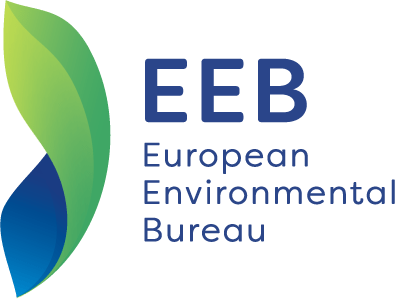Closing the ‘Reality Gap’ – Ensuring a Fair Energy Label for Consumers
Strengthening product testing of dishwashers, refrigerators and televisions
Last week, the European Parliament voted a revised Energy Labelling Regulation reinforcing its consumer empowerment role. Following that parliamentary decision, a group of environmental NGOs are publishing today a report focusing on 18 months of research into the test standards of three popular consumer products covered by the energy label scheme – dishwashers, refrigerators and televisions. The study found that the test standards, when used for the declaration of energy-performance of these products, do not always reflect typical consumer usage and technological developments.
[wpfd_single_file id=”17855″]
Appliances regulated by the EU energy label are responsible for most home energy use. Together with other efficiency policies, experts estimate these policies are set to reduce energy bills of an average EU household by nearly €500 by 2020 [1].
Environmental groups are calling for more accurate, fair and consumer-relevant standards in support of the provision laid out in the newly revised EU Energy Labelling legislation stating “Harmonised standards shall aim to simulate real-life usage as far as possible while maintaining a standard test method.” [2]. These standards are the foundation on which robust policies are built, and they require staying up-to-date with technological and behavioral evolution and new features entering the market.
The investigation
A group of NGOs collaborated to study test standards of three popular consumer products: dishwashers, fridge-freezers and televisions. Following European harmonised test standards and implementing deviations from those, the NGOs explored product performance under both standardised test conditions and under conditions that are closer to real life. Only one unit of each model was tested, so the results and process followed do not constitute market surveillance testing and consequently not a compliance check. For this reason, the names of the models tested are not published in the report.
Findings:
The investigation’s key finding is the need to improve test methodologies overall and establish a solid foundation for more representative, more reliable measurements, and better policy measures that depend on those measurements.
Four principal concerns were identified through this research and testing which may be undermining the representativeness and transparency of the energy label:
- Differences in energy consumption between test standards and ones that would reflect better real world usage – this can lead to consumers having a false impression of running costs in the home;
- Test standards that do not keep pace with technological progress – this can prevent the measurement of energy used by these new features, and fail to incentivise manufacturers to make those features energy-efficient;
- Ambiguities in test standards that undermine reproducibility of parameters measured – this can reduce the consistency and accuracy of measurements from different laboratories in Europe; and
- Confusing or non-existent consumer information – this concern centres around a lack of information on energy consumption in the wide range of modes and options available in today’s appliances.
Solutions proposed
The NGOs recommend that the standardisation community, policy-makers, and other stakeholders work together to make improvements in standards for the three product groups investigated (and learn lessons beyond), including;
- Place more emphasis on real world usage patterns for all product standards and give civil society groups a greater say in standard setting. Realistic standards are less vulnerable to software circumvention. Standards should be revised more frequently to keep pace with technological development.
- The energy label should always be based on the most frequently used programme & settings and consumers should be warned about energy impacts when they deviate from them.
- Ensure consumers are given useful information on energy impacts when they change settings and/or update software, and users should always have the option of reverting back to the previous setting.
- National enforcement agencies need greater resources to crack down on free-riders, include the ability to award consumer compensation. Consumer losses currently run to an estimated €10 billion per year in Europe [3].
- Supplement test standards with an additional test defined within real-world boundaries. If the deviation of results between the two is outside acceptable limits, the model is studied further and/or declared non-compliant.
Complementing these recommendations, the NGOs developed a new video test loop for measuring average television power use that is much closer to what is broadcasted today to replace the standardised video which is more than ten years old. We also suggest a test method for measuring automatic brightness control, a feature that adapts the brightness of the screen to the ambient light and allowing energy. These are offered to help strengthen television testing and improve the real-life representativeness of the test.
Senior consultant for Topten, Francisco Zuloaga, said: “People trust the energy label and our work is intended to underpin that, to ensure that ‘what you buy is what you get’. Our study found gaps where things could be strengthened. Policymakers and the standardisation community should quickly adopt our recommendations to help ensure a level playing field for all.”
ENDS
Notes
[1] See: https://ec.europa.eu/energy/sites/ener/files/documents/ecodesign_factsheet.pdf
[3] See: http://www.web4948.vs.speednames.com/upl/File/Ecodesign/Session-2-CLASP.pdf
For more information:
Jack Hunter, European Environmental Bureau Press Officer
Jack.Hunter@eeborg, +32 483 638 557
Francisco Zuloaga, Topten Senior consultant
francisco.zuloaga@topten.eu, +33 651 808 717
Stephane Arditi, European Environmental Bureau Law Expert
stephane.arditi@eeb.org, +33 640 639 772

